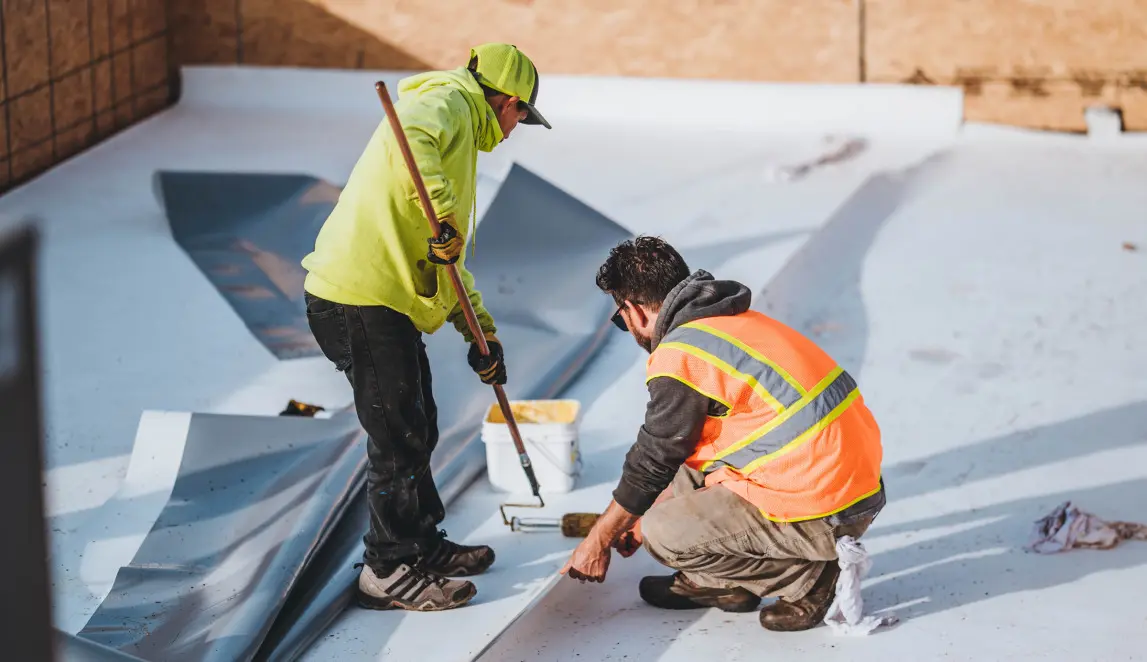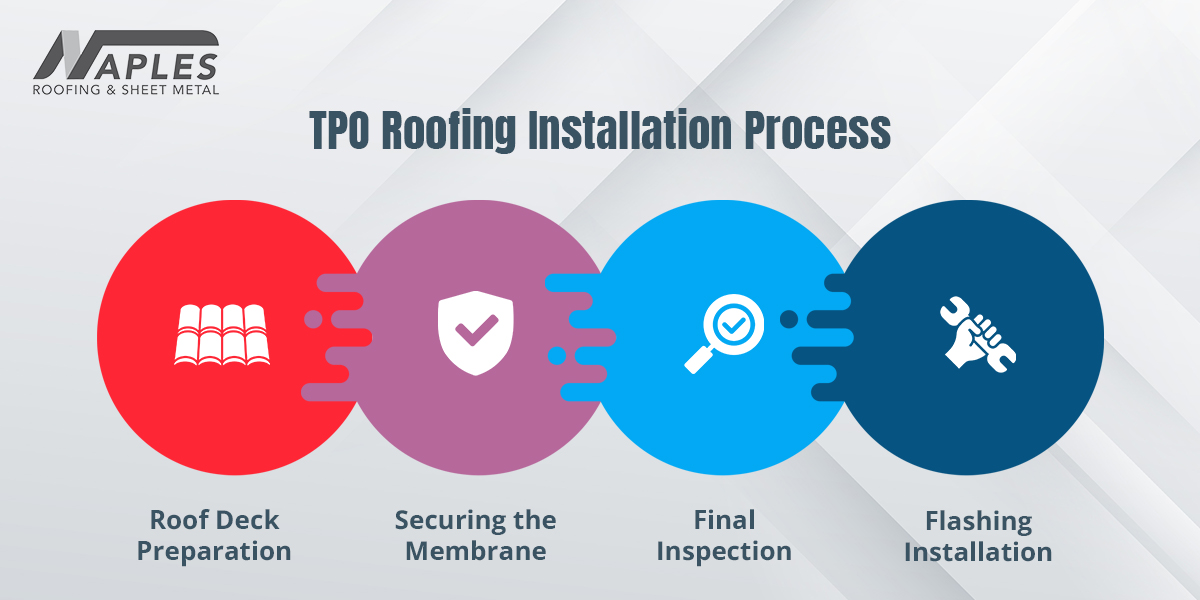TPO Roofing: Cost, Material, and Installation Guide
Thermoplastic Polyolefin (TPO) roofing has become very popular recently in the US due to its affordability, energy efficiency, and long-lasting performance. For those considering roofing options, particularly in the US, TPO roofing is an excellent choice, whether you’re constructing a new building or replacing an old roof. This guide offers a thorough analysis of TPO roofing in US, including information on installation costs, materials, and procedures.
What is TPO Roofing?
TPO is a type of single-ply roofing membrane that blends polypropylene and ethylene-propylene rubber. Builders commonly use it on flat or low-sloped roofs, especially in commercial and industrial buildings. The membrane is typically white, which reflects sunlight and helps in reducing energy costs.
Benefits of TPO Roofing-
- Energy Efficiency: TPO’s reflective surface helps reduce heat absorption, lowering cooling costs in buildings.
- Durability: TPO is resistant to tears, punctures, and impacts. It can withstand harsh weather conditions, including UV radiation and chemical exposure.
- Eco-Friendly: TPO is fully recyclable, making it a sustainable option for environmentally conscious property owners.
- Cost-Effective: Compared to other roofing materials like EPDM or PVC, TPO offers a balance of affordability and performance.
TPO Roofing Costs-
The cost of TPO roofing can vary widely depending on several factors, including the size of the roof, the quality of materials used, and the complexity of the installation. Here is a summary of possible expenses:
- Material Costs: TPO membrane typically costs between $1.50 and $3.00 per square foot. Moreover, the thickness of the membrane (measured in mils) and the quality of the material can affect the price. Thicker membranes offer better durability but at a higher cost.
- Installation Costs: The labor charge per square foot might vary from $3.50 to $7.50.This includes the cost of removing the old roof, preparing the roof deck, and installing the TPO membrane. Complex roof designs or roofs with multiple penetrations (like vents or skylights) can increase the labor cost.
- Total Cost: For a typical 2,000-square-foot commercial roof, the total cost of TPO roofing can range from $10,000 to $20,000. This includes both materials and installation.
TPO Roofing Materials-
Moreover, TPO roofing systems comprise several key components:
- TPO Membrane: Available in various thicknesses (45, 60, 80 miles), the membrane is the main component that provides the waterproofing layer.
- Adhesives: Used to bond the TPO membrane to the roof deck or insulation. Adhesives come in either water-based or solvent-based forms.
- Fasteners and Plates: These are used to secure the membrane to the roof deck mechanically. The choice of fasteners can depend on the type of deck material.
- Flashing and Accessories: TPO systems include flashing components to cover roof edges, penetrations, and joints to ensure a watertight seal.
- Insulation: Moreover, polyisocyanurate (ISO) is the most commonly used insulation material with TPO roofing. It provides thermal resistance, improving the energy efficiency of the building.
TPO Roofing Installation Process-
Specialized skills and tools are crucial when installing TPO roofing, especially when dealing with emergency roofing services in Buffalo. The process typically involves the following steps:
- Roof Deck Preparation: The existing roof material is removed, and the roof deck is inspected for damage. Make any necessary repairs before proceeding.
- Insulation Installation: Insulation boards are installed over the roof deck. Attach them using adhesives or mechanical fasteners.
- Membrane Placement: The TPO membrane is rolled out over the insulation, ensuring proper alignment. It is important to allow the membrane to relax before securing it to minimize wrinkles.
- Securing the Membrane: The membrane is fastened to the roof deck using mechanical fasteners or adhesives. Therefore use hot air welding equipment to weld overlapping seams and create a watertight seal.
- Flashing Installation: Moreover, flashing is installed around roof edges, vents, and other penetrations to prevent water infiltration.
- Final Inspection: The roof is inspected to ensure all seams are properly welded, and the membrane is securely fastened.
Maintenance and Longevity-
Thermoplastic requires little maintenance, making it a convenient choice for building owners. Unlike some other roofing systems, TPO roofs demand only occasional upkeep to ensure their longevity and performance. Regular inspections are key, especially after extreme weather events like heavy storms or high winds. Hence these inspections help in detecting any potential issues early on, such as small tears or loose seams, allowing for timely repairs that can prevent more significant damage.
A TPO roof typically lasts between fifteen and thirty years. The thickness of the TPO membrane and the quality of the initial TPO roof installation have a major impact on its lifespan. Thicker membranes offer better wear and tear resistance, contributing to a longer roof life. By ensuring proper installation and adhering to a regular maintenance schedule, you can maximize the durability and effectiveness of your Thermoplastic Polyolefin roofing system over the years.
Conclusion:
For individuals seeking a long-lasting, economical, and energy-efficient roofing option, TPO roofing is a great option. Your structure can have long-lasting protection from a TPO roof with proper installation and upkeep. When considering TPO-roofing, it’s essential to work with an experienced roof replacement contractor in NY who understands the intricacies of TPO installation to ensure the best results.



